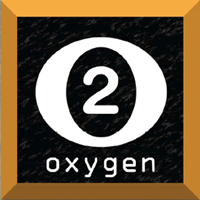The Big 10
Oxygen Evolution
- By David Kopf
- Jan 01, 2012
 The challenges facing oxygen providers in 2012 are the result of public policies that were developed several years ago. The impact of these challenges, and how providers continue to redefine their businesses to not only survive them, but thrive despite them is a story that continues to unfold in 2012.
The challenges facing oxygen providers in 2012 are the result of public policies that were developed several years ago. The impact of these challenges, and how providers continue to redefine their businesses to not only survive them, but thrive despite them is a story that continues to unfold in 2012.
The central public policy threat to funding that has been facing providers is the 36-month rental cap. This actually started to make it’s impact felt in 2009, but has truly made its impact felt over the past two years. And it will continue to do so in 2012.
But that hasn’t been the only challenge oxygen providers have been dealing with. They have also been contending with the 9.5 percent cut to their funding per the Medicare Improvements for Patients and Providers Act, and the implementation of Round One of CMS’s competitive bidding program. Moreover, as we enter 2012, oxygen providers are facing the bidding of Round Two, which will make the program’s impact felt to nearly all oxygen providers.
Of course, the big hit has been the 36-month rental cap. Instead of billing the full duration of a five-year rental period for oxygen services, providers can only bill for 36 months, while having to provide services for the full five months. Add to that the fact that oxygen providers must find support for patients still in their five years of servie who move or travel. This means that providers have had to completely alter how they do business.
The big shift has been to low- and non-delivery models. Delivering oxygen via cylinder is highly expensive. If oxygen providers could transition to a business model that greatly reduced or altogether eliminated deliveries from their business models, they just might find a way to survive CMS’s funding cuts.
The major way they are accomplishing this is through home filling systems that let patients use concentrators or larger tanks to fill smaller traveling cylinders, or through portable oxygen concentrators. Not only do these systems help providers radically overhaul their cost structures, but they also help get patients more mobile, and thusly improve their therapeutic outcomes.
Of course these new technologies come at a price. POCs are expensive equipment, and thusly oxygen providers have also become savvy at source inventory financing and other sorts of capital that can help them ensure they can respond to new orders without financial hold-ups.
And to help further reduce delivery overhead, oxygen providers are turning to route planning software, GPS tracking and other deliver operations innovations that can help them drive down the costs of the remaining deliveries they must perform.
All that effort seems to have paid off. In our 2011 survey of oxygen providers we found that 63.4 percent of respondents said their business grew over the last 12 months, compared to 60.4 percent in 2010. And, 40.4 percent called the 36-month oxygen cap the greatest challenge for their business, where 54.2 percent blamed the cap in 2010. In the end oxygen providers are sticking with it, as 57 percent responding that they are not considering exiting the oxygen business due to caps and cuts, where 66.9 percent considered exiting last year.
The big challenges of shifting to low/no delivery are varied, and per our survey, include delivering equipment/oxygen cylinders (32.3 percent), maintaining customer service (24.7 percent), providing oxygen for traveling/relocating patients (14 percent), servicing and repairing equipment (11.8 percent), maintaining respiratory therapist service (10.8 percent) and negotiating pricing for oxygen for traveling/relocating patients (6.5 percent). In 2010, respondents said delivering equipment and oxygen cylinders was third on the list at 15.3 percent. In 2011, we see it spike to 32.3 percent as the No. 1 challenge due to the cap.
Still, while competitive bidding didn’t rank as oxygen providers’ central concern in 2011, that might change in 2012. Now that they have been on track as far as changing their business models to deal with the rental cap is concerned, the fact that Round Two is looming could shift their concerns.
The implementation of Round One represents a massive funding cut for the oxygen providers impacted — especially when you factor in the the 9.5 percent cut per MIPPA. For instance, the previous allowable on an oxygen concentrator averages $173.17 per month, but with the Round One rates, the new payment is at $116.16. Expand similar reductions nationwide through Round Two, and oxygen providers are bound to sit up and take notice.
Oxygen providers you have come a long way. You’ve demonstrated that even through draconian programs such as the 36-month rental cap, an HME provider can redefine its business model and implement savvy practices to not only survive tough funding cuts, but still come out ahead. But, just as you’ve managed to get your feet on the ground and regain your balance, tougher funding challenges await in 2012.
This article originally appeared in the January 2012 issue of HME Business.
About the Author
David Kopf is the Publisher HME Business, DME Pharmacy and Mobility Management magazines. He was Executive Editor of HME Business and DME Pharmacy from 2008 to 2023. Follow him on LinkedIn at linkedin.com/in/dkopf/ and on Twitter at @postacutenews.